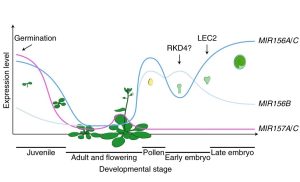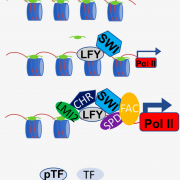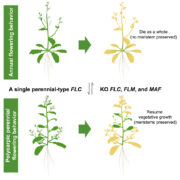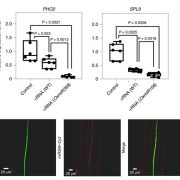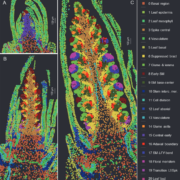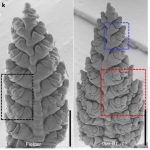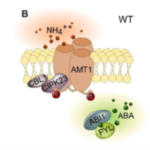A robust mechanism for resetting juvenility during each generation in Arabidopsis (Nature Plants)
Proper development requires an aging program that is regulated throughout the entire lifespan of an organism as well as across generations. In plants, reproductive cells are derived from differentiated cells, and thus the aging program encoded in these reproductive cells must be rejuvenated per generation. So, how exactly is the cycling of this program controlled? In a data-rich paper, Gao et al. identified the microRNAs miR156 and miR157 (miR156/7) as the key molecular regulators in Arabidopsis thaliana. First, they showed that expression patterns of miR156/7 and the several functionally-redundant gene loci from which they are derived are suggestive of developmental programming, with MIR156A-C activation occurring during sexual reproduction and embryogenesis, and MIR157A/C levels resetting during germination. Studies performed with an impressive number of higher-level mutants (generated by CRISPR/Cas9) demonstrated the importance of MIR156/7 in the length of juvenility and the transitions into vegetative/sexual maturity, indicating their role in setting the plant’s developmental program. ATAC-seq performed on the most relevant genes, MIR156A-C and MIR157A/C, revealed variations in the accessibility of these different genes over time. MIR156A/C specifically demonstrated an accessibility patterning that was periodic by generation. The authors deemed the accessibility regulatory sequences of MIR156A/C as the “juvenility resetting region” (JRR). They further discovered a binding site in this JRR for LEAFY COTYLEDON2 (LEC2), an important transcription factor for embryogenesis. Through a combination of genetics, in vitro and in vivo binding assays, and inducible lines, they confirmed that MIR156A/C are both direct targets of LEC2, and that their LEC2-mediated activation is crucial for resetting plant juvenility. This work builds a molecular foundation for how plants regulate developmental programming over generations. (Summary by Benjamin Jin) Nature Plants, 10.1038/s41477-022-01110-4


